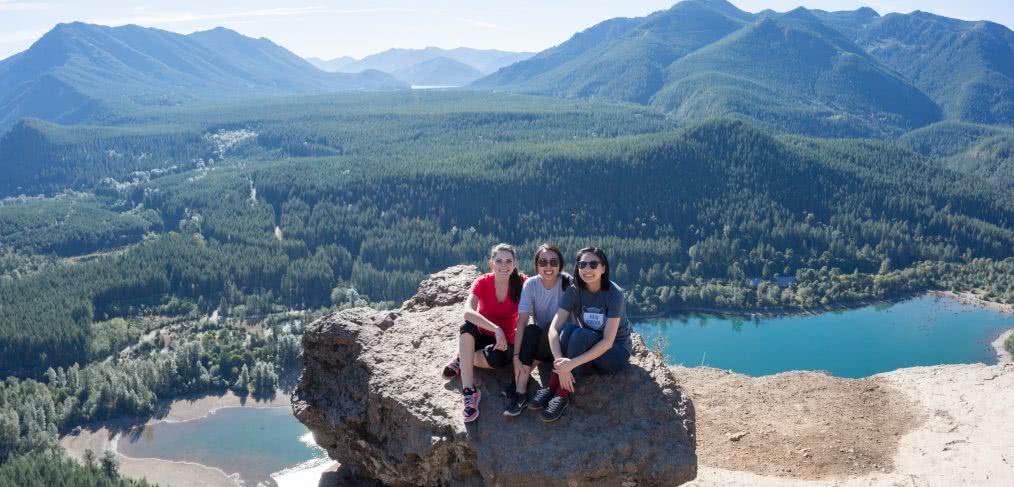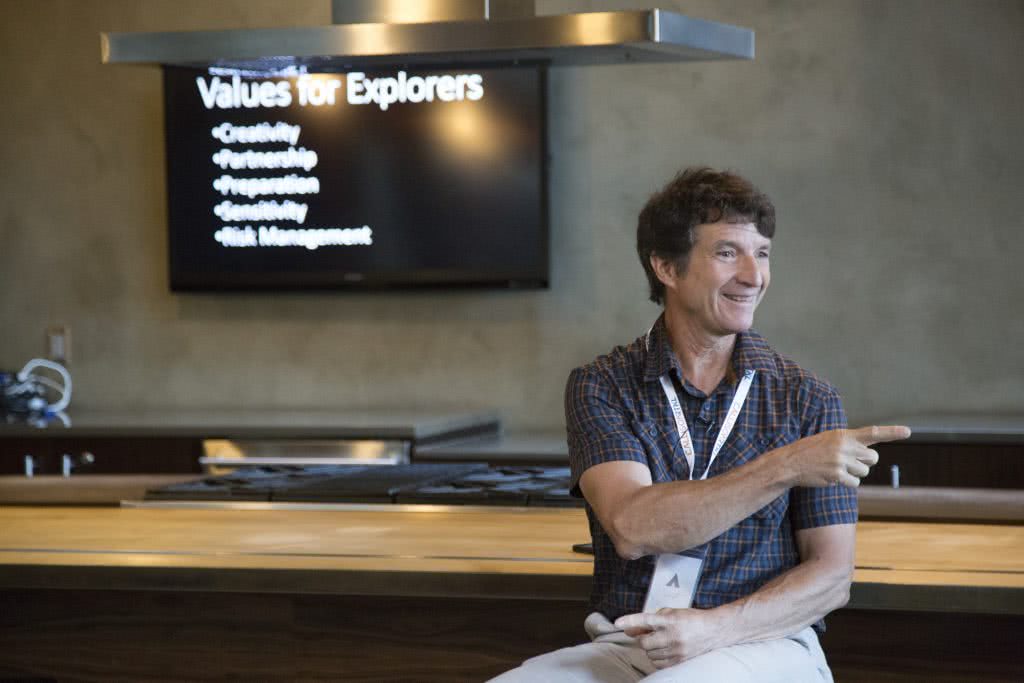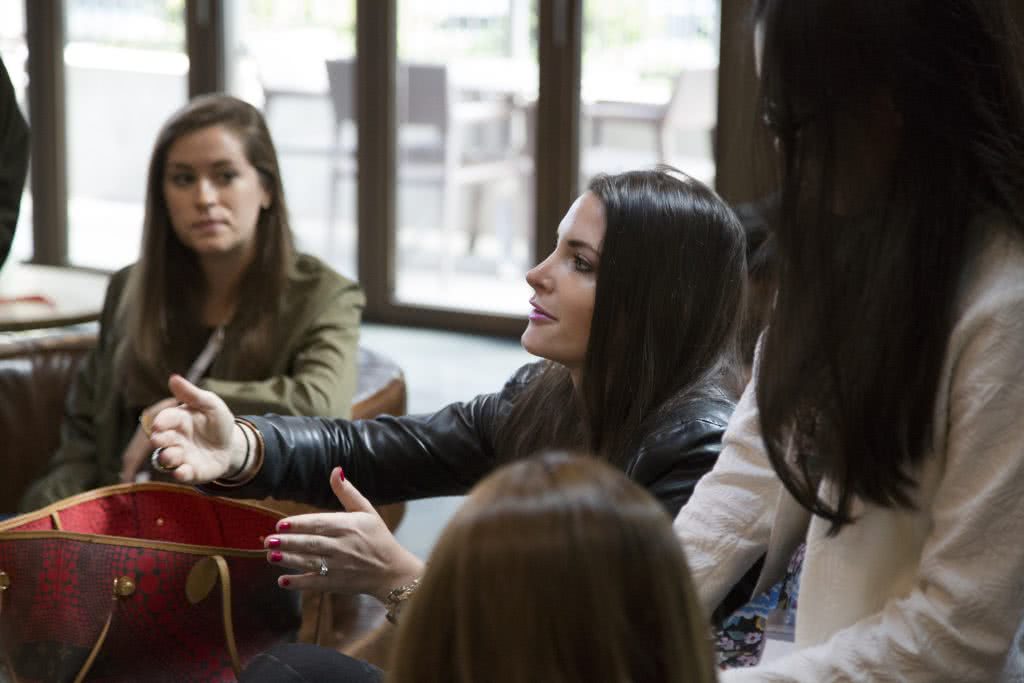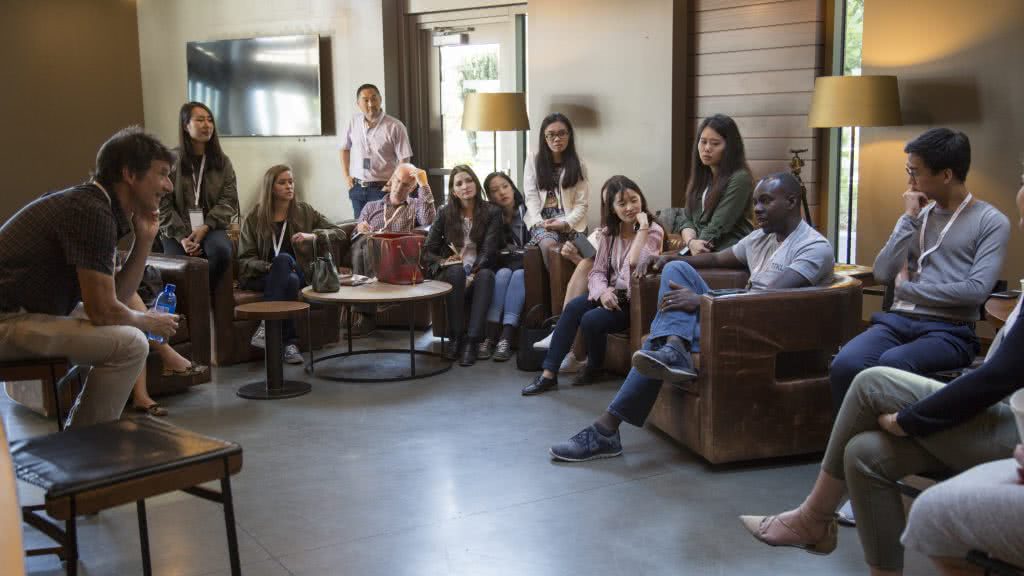
A Walk on the Mountain Side: 6 Things to Know About Reaching Your Goals
The 2017 CallisonRTKL Design Conference took place September 11-13 in Seattle. “Ascend” was the theme of this year’s event, which brought together 15 up-and-coming designers from each of the firm’s global offices for three days of professional development, team-building and design inspiration. This post is the second installment in a series of reflections from some of this year’s attendees on their experiences.
Picture this: It’s 9a.m. on a Tuesday in an amazingly (and surprisingly) sunny Seattle. We walk from our hotel to Via 6, a residential development and home of one of our colleagues. Through the rolling—and sometimes incredibly steep—Seattle hills and streets, we wander. It’s our first ascent of the day but certainly not our last.
We all took a seat in Via 6’s uber-hip kitchen/living room/meeting space and looked up Steve Swenson, retired engineering consultant and current director of the Pacific Northwest chapter of Alpine Mentors—but perhaps most importantly, world-recognized mountain climber.
I know, I know…climbing? What could we as designers possibly learn from climbing? Or how could it apply to architecture?
Yes, I confess, I wondered the same things that you are likely wondering now, but believe me when I say…there is more in common between climbing and architecture than you could imagine.
Mr. Swenson delved into his life—and climbing—journey. We quickly saw the many risks involved in being a climber. I’m no climber, but it seems to me that you’re practically deciding to put your life in the hands of a simple thread just to achieve the goal of reaching the top.
But, as Mr. Swenson said, it’s not just any goal; it’s a “big, hairy, audacious goal” that keeps you going until you achieve it.
Mr. Swenson’s hairy and audacious goal wasn’t typical; he didn’t want to just summit Everest, one of the most famous climbing challenges. No, Mr. Swenson went beyond that. His goal was—and continues to be—reaching the peaks of the most unimaginable, unknown and never-climbed-by-another-human places with probably the best views in the world.
It was fascinating to hear Mr. Swenson share some of his adventures with us and relate them to our work, while giving us space to pose some really interesting questions about ourselves and the company.
The following are some lessons I learned:
1. Challenge yourself–not just with something everyone considers a challenge but with something that YOU consider challenging, something that is meaningful to you. If you have a goal that challenges and inspires you, you will always work towards achieving it.
As designers, must always think about if there is different way to approach a problem or explore solutions. Always ask yourselves why you are doing something to make sure we are not just repeating patterns, ideas or established coding. There is always a place for creativity.
2. When you have a goal, planning is not just important; it is essential.
As a life threatening activity, climbing requires careful planning to ensure security. In fact, the planning and preparation phases actually are about 80% of any climbers journey, while the physical climbing takes place in just a few days.
As professionals in architecture, maybe we are not risking our lives in our everyday activities, but we do have to plan for how a human will live a moment of their life through our spaces. We can think about this by reviewing coding, spatial proportion, user flows, specs, etc. We must also diligently plan in order to ensure the project is delivered on time with the required resources and is the highest quality every time.

3. The famous “Go-No Go” – Risk management
If every time we were to make a decision, we pretended to be Mr. Swenson evaluating if the decision he is going to make is going to risk his life, then we probably would take more careful and calibrated chances when:
- Evaluating if accepting or rejecting a project
- Reviewing project plans
- Drawing a detail on emergency stairs
- Writing specs
- Deciding the number of passenger elevators in a tower
4. Quality-Time-Budget
These are the 3 things we all want when doing a project, but as Mr. Swenson mentioned, normally you get 2 out of the 3…you can’t always have it all. If you want something done fast, it will be expensive or poor quality, etc.
But, as architects, we must make sure that we never sacrifice quality, because that is what makes you different. Quality is the DNA that defines our work.
5. Be prepared to be creative enough to find solutions for unplanned events.
As Mr. Swenson exemplified, even if you plan for every detail, there are always going to be unplanned events. In these situations, you have to be flexible and creative enough to create an alternate plan and solution for what you confront.
6. Team work is crucial, and communication is the key.
Think about it: you are going to the middle of nowhere, risking your life and just a few people can form the team. Every single person has to be coordinated and carefully synced for success to happen; failure when climbing can mean injuries or even death. Who would you want those team members to be?
Probably someone close right? Someone that you know is capable to do what the team needs him to do. And definitely someone you can trust.
But you don’t always get to pick who you work with, but you’re still a team—even if your team’s goal is the only thing you have in common. We must be able to rely on each other and be capable of communicating if we feel something isn’t running smoothly as it should.

And communication goes both ways. It’s not just you speaking your thoughts about your partner’s work; it’s also being truthful to yourself and others in acknowledging when you aren’t proficient in a task or when you need help. This last thing is what defines a great team member: attitude, disposition and reliability.
All of the above were lessons and eye openers about the ways we can work together.While talking through these points at the Design Conference, we had a chance to share work-related experiences, and it seemed that, at least in the group, the most common take away was that we must work together as a group—even when we live halfway around the world. When we tackle these issues as a team, we can conquer even the biggest mountains.
